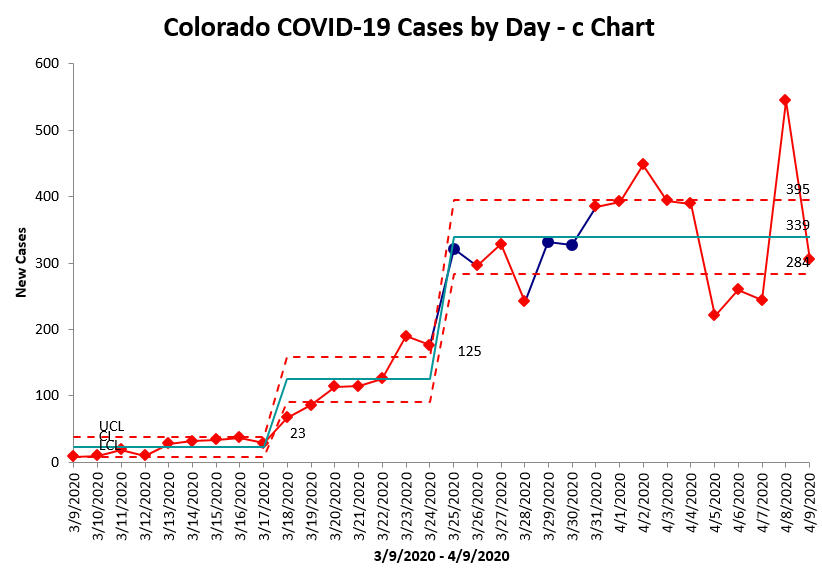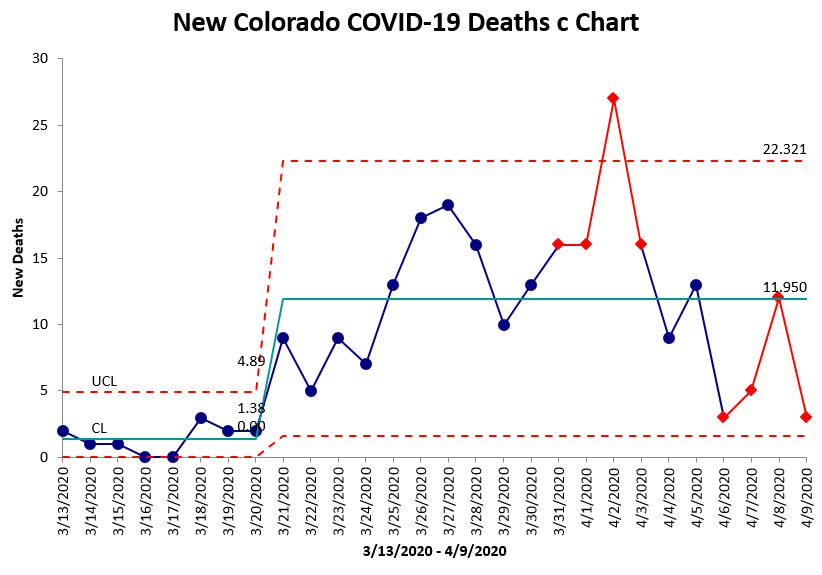Home »
Blog » Quality Tools » Page 4
Improvement Insights Blog
Posts tagged "Quality Tools"
Are you skipping Six Sigma stones across the surface of your business or are you finding people who take to it like a duck to water. People who can dive beneath the surface to find the invisible low-hanging fruit?
“Have you ever skipped a rock across a lake? Maybe the first time you threw it out there it just went “sploosh.” Then you figured out that flatter rocks skip better, so you started throwing them out and they’d go “skip-skip-sploosh,” or maybe get three or four or five “skip-skips” and “sploosh.”
“Then a duck came flying in, put out its landing gear and just kind of eased into the water.
Continue Reading "Skipping Stones or Diving Beneath the Surface of Your Business?"
Posted by Jay Arthur in Agile Lean Six Sigma, Improvement Insights, Lean, QI Macros, Six Sigma.
Over 140 people signed up for this webinar, with Jay Arthur demonstrating how to use some of the useful features of QI Macros, as well as some of the new features introduced in recent releases of the software.
Some attendees were familiar with the software and already use it, some had only begun to use it; all were interested in learning new ways that QI Macros can help them with their Agile Lean Six Sigma and Quality Improvement efforts. (You can hear him answering questions and comments typed in by webinar attendees.)
If you saw a feature demonstrated in the webinar that might have been added to QI Macros after the version you’re using (for instance, the Templates Wizard, the Fixed Limit indicator or the automated Process Change Wizard), you may need to purchase an upgrade to bring your QI Macros to the current version.
Continue Reading "6/9/20 QI Macros Webinar"
Posted by Jay Arthur in Data Mining, Excel, QI Macros, Webinar.
That's root cause analysis: What are the common patterns? Where's the Pareto principle?
Continue Reading "Root Cause Analysis in the Time of COVID-19"
Posted by Jay Arthur in Healthcare, Improvement Insights, QI Macros.
Even before COVID-19, I gave my staff digital thermometers, oximeters and blood pressure cuffs to help them monitor their health. You can too. Here’s how:
“Hi, I’m Jay Arthur, author of “Lean Six Sigma for Hospitals” and QI Macros [software].
“I don’t know about you but when I was a kid growing up and my mom needed to take my temperature we used something called a thermometer. This is actually the original box that it was in, but that’s no longer necessary right? Now we have these kind of tools which you can just buy at your local store. Once you press it and turn it on you just scan it across your head and it’ll read your temperature.
Continue Reading "Tools to Monitor Your Own Health"
Posted by Jay Arthur in Healthcare, Improvement Insights.
Humans, by nature, have a fear of looking bad (FOLB). And we have a fear of looking stupid (FOLS). These are slowing COVID-19 response and quality improvement. Here’s why:
Hi, I’m Jay Arthur, author of “Lean Six Sigma Demystified” and QI Macros [software].
“You’ve all probably all heard some of these acronyms that are running around like FOMO: Fear Of Missing Out. Well, I wanted to introduce you to a couple more that I’d like you to consider. FOLB: Fear Of Looking Bad.
“Now when I’ve gone out to work with companies in consulting roles, some of these managers think, “I’m supposed to be in charge of fixing everything.
Continue Reading "FOLB – Fear of Looking Bad"
Posted by Jay Arthur in Healthcare, Improvement Insights, Lean, Manufacturing, Six Sigma.
Over 120 people signed up for this webinar, with Jay Arthur demonstrating how to use some of the useful features of QI Macros, as well as some of the new features introduced in recent releases of the software.
Some attendees were familiar with the software and already use it, some had only begun to use it; all were interested in learning new ways that QI Macros can help them with their Agile Lean Six Sigma and Quality Improvement efforts. (You can hear him answering questions and comments typed in by webinar attendees.)
If you saw a feature demonstrated in the webinar that might have been added to QI Macros after the version you’re using (for instance, the Templates Wizard, the Fixed Limit indicator or the automated Process Change Wizard), you may need to purchase an upgrade to bring your QI Macros to the current version.
Continue Reading "5/14/20 QI Macros Webinar"
Posted by Jay Arthur in Data Mining, Excel, QI Macros, Webinar.
There are COVID-19 hot spots and cold spots. How do we keep the cold spots open and detect and quarantine warming spots? Maybe statistical process control can help.
“Hi, I’m Jay Arthur, author of “Lean Six Sigma for Hospitals” and QI Macros [software].
“Back in the mid 1800s there was a cholera outbreak in London, and John Snow (not of Game of Thrones, but Dr. John Snow) said, “I think there’s a pattern here.” He went out and figured out that everybody who had cholera was getting water from the Broad Street pump. Back then, there was no indoor running water so you had to take your pail, go out to the pump and get your water for your home or your business or your restaurant.
Continue Reading "Cholera and COVID-19 Hot Spot Detection and Quarantine"
Posted by Jay Arthur in Improvement Insights, Six Sigma.
While most COVID-19 charts show cumulative cases and deaths, I wondered what would happen if we turned the cumulative data into a daily data and plotted it as a control chart. It is possible to use c or XmR charts for this purpose. Process changes chosen based on runs and trends in the data.

Daily new cases still unstable, but hovering around 339/day. Cases began to rise 3/18. Potentially leveling off 3/26. the date of state “stay-at-home” order.

Daily deaths still unstable, but hovering around 12/day. Deaths began rising 3/21, but appear to be stabilizing. Significant spike on 4/2, root cause unknown.
Continue Reading "Colorado COVID-19 Cases and Deaths in Control Charts"
Posted by Jay Arthur in Jay Arthur Blog, QI Macros.
More than 40 people signed up for this webinar, with Jay Arthur demonstrating how to use some of the useful features of QI Macros, as well as some of the new features introduced in recent releases of the software.
Some attendees were familiar with the software and already use it, some had only begun to use it; all were interested in learning new ways that QI Macros can help them with their Agile Lean Six Sigma and Quality Improvement efforts. (You can hear him answering questions and comments typed in by webinar attendees.)
If you saw a feature demonstrated in the webinar that might have been added to QI Macros after the version you’re using (for instance, the Templates Wizard, the Fixed Limit indicator or the automated Process Change Wizard), you may need to purchase an upgrade to bring your QI Macros to the current version.
Continue Reading "4/9/20 QI Macros Webinar"
Posted by Jay Arthur in Data Mining, Excel, QI Macros, Webinar.
COVID-19 has slowed business for much of the nation. Here’s how you can make use of the time:
“Hi, I’m Jay Arthur, author of “Lean Six Sigma Demystified” and the QI Macros [software].
“I don’t know about you, but with this COVID virus thing going around, business has slowed a little bit, but that’s great! That gives us an opportunity to start to focus and work ON our business, not IN our business. Now is the time to start to find ways to simplify, streamline, optimize everything that you do so that when things come back on you’ll be ready for it and you’ll be faster, better, cheaper than you ever were before.
Continue Reading "Work ON your business, not IN it."
Posted by Jay Arthur in Agile Lean Six Sigma, Improvement Insights.





